chapter 5 part one
1/227
There's no tags or description
Looks like no tags are added yet.
Name | Mastery | Learn | Test | Matching | Spaced |
|---|
No study sessions yet.
228 Terms
A disorder of structure or function in an organism, especially one that produces specific signs or symptoms and has a clearly defined reason behind it. It is not a direct result of physical injury.
Disease
A disease caused by pathogenic microorganisms—such as bacteria, viruses, parasites, or fungi—that can be spread, directly or indirectly, from one person to another.
Infectious Disease
Transmitted in the gametes (eggs or sperm) through generations.
Familial
Wrong number of chromosomes (too many or too few).
Chromosome Anomaly
Right number of chromosomes, but the gene is defective and will not make the correct protein
Genetic Disease or Defect
A number of symptoms that suggest a particular disease.
Syndrome
A general term meaning something in the body is not working correctly
Disorder
Passed from parents to offspring through genes.
Hereditary
(Birth defect) present at birth, so not genetically determined ( not inherited).Occurred during feral development .
Congenital
When a baby is born with congenital heart disease, is there a known reason for it ?
No
How are some human traits inherited?
-Some human traits are controlled by a single gene with two alleles (like the traits Mendel studied in pea plants)
-others by a single gene with multiple alleles.
-however, many genes that act together control most traits. These are called non-Mendelian Genetics
Fill the blank
Many genes that act together to control most traits. These are called ……………………..
Non-Mendelian genetics.
How many traits of a pea plants did Mendal study? – luckily - each sorted……………..
Mendel studied only 7 traits of a pea plants, each sorted
independently,
What does it mean when genes assort independently?
Each trait is inherited independently, so one trait does not affect another.
How many alleles for a single gene resulting in a single trait?
There are 2 alleles for a single gene resulting in a single trait.
three or more forms of a gene that code for a single trait.
Multiple alleles
Can a person have all multiple alleles?
No. A person can only carry two alleles at a time because chromosomes come in pairs and each chromosome has only one allele per gene.
Why does a person carry only two alleles at a time?
because chromosomes exist in pairs and each chromosome in a pair carries only one allele for each gene.
Give an example of a trait controlled by multiple alleles
Blood type in humans.
There are 3 alleles: A, B, and O.
A and B are codominant.
O is recessive.
This makes 4 blood types: A, B, AB, and O
What does codominant mean (in blood type)?
It means both alleles are expressed equally.
Example: In AB blood type, both A and B proteins show up on red blood cells.
Some human traits are controlled by what?
By a single gene with two alleles (what Mendel studied in pea plants), and others by a single gene with multiple alleles
How many alleles are there for a single gene resulting in a single trait?
2 alleles — one from each parent.
What do you call traits controlled by many genes that act together?
Non-Mendelian Genetics
What controls most human traits?
Many genes that act together
How many alleles does blood type have?
3 alleles
What type of inheritance do A and B alleles show?
A and B are codominant.
What type of allele is O in blood type?
O is Recessive.
How many blood types are there?
4 blood types.
How many alleles can be expressed in a heterozygous individual, even if multiple alleles exist in the population?
Only two alleles can be expressed

What is the example used on this slide to explain multiple alleles and codominance?
Blood type.
What does “I” stand for in blood type notation (IA, IB, i)?
Immunoglobulin (the antibody)
What are the possible genotypes for blood type A?
IAIA or IAi.
What are the possible genotypes for blood type B?
IBIB or IBi.
What is the genotype for blood type AB?
IAIB.
What is the genotype for blood type O?
ii.
What is pleiotropy?
Pleiotropy occurs when one gene can influence two or more seemingly unrelated phenotypic
What is an example of pleiotropy in Siamese cats?
In Siamese cats, both crossed eyes and dark-tipped hair extremities are caused by the same gene.
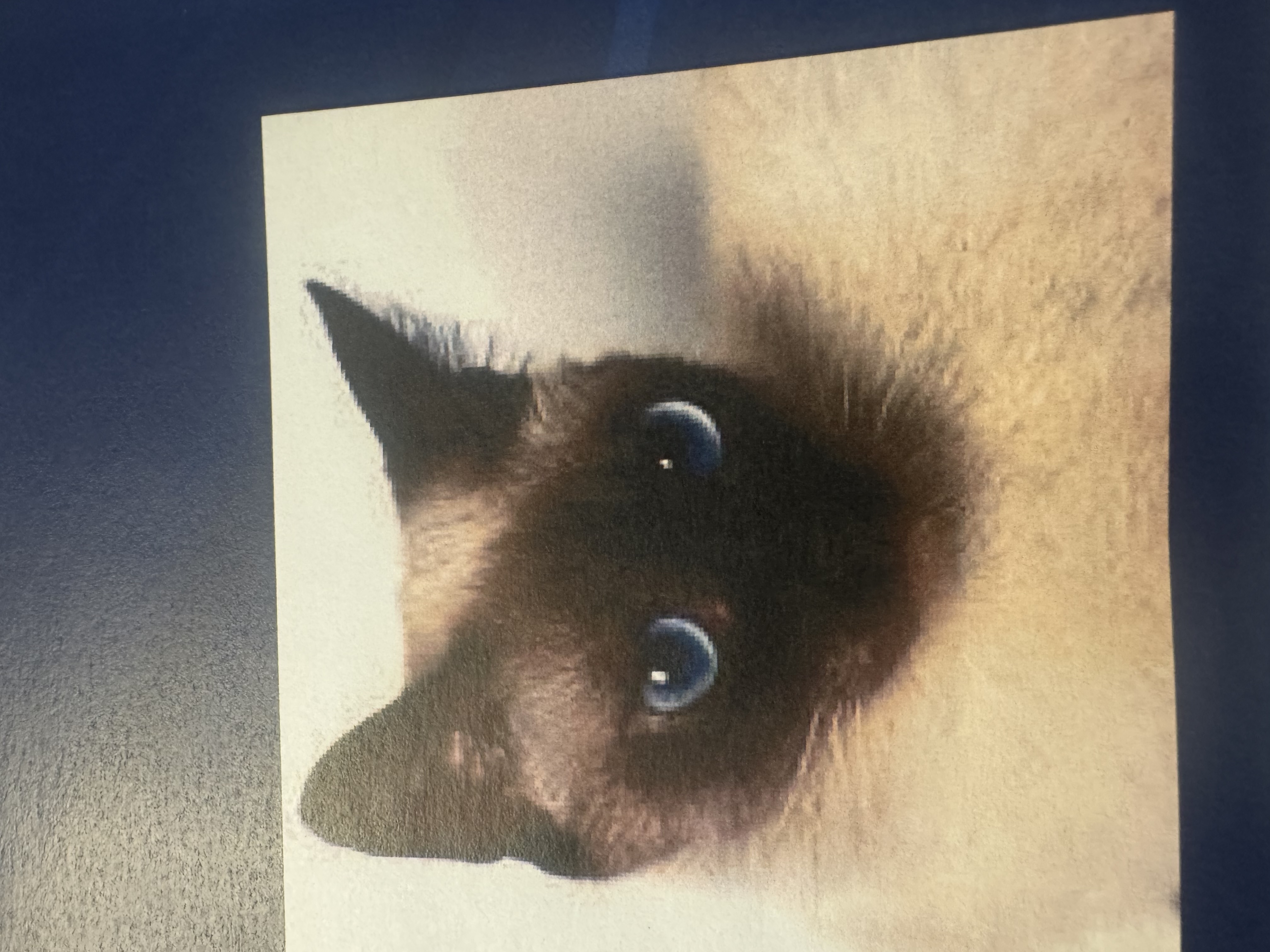
What is an example of pleiotropy in humans?
Red hair, pale skin, and freckles in humans are examples of pleiotropy
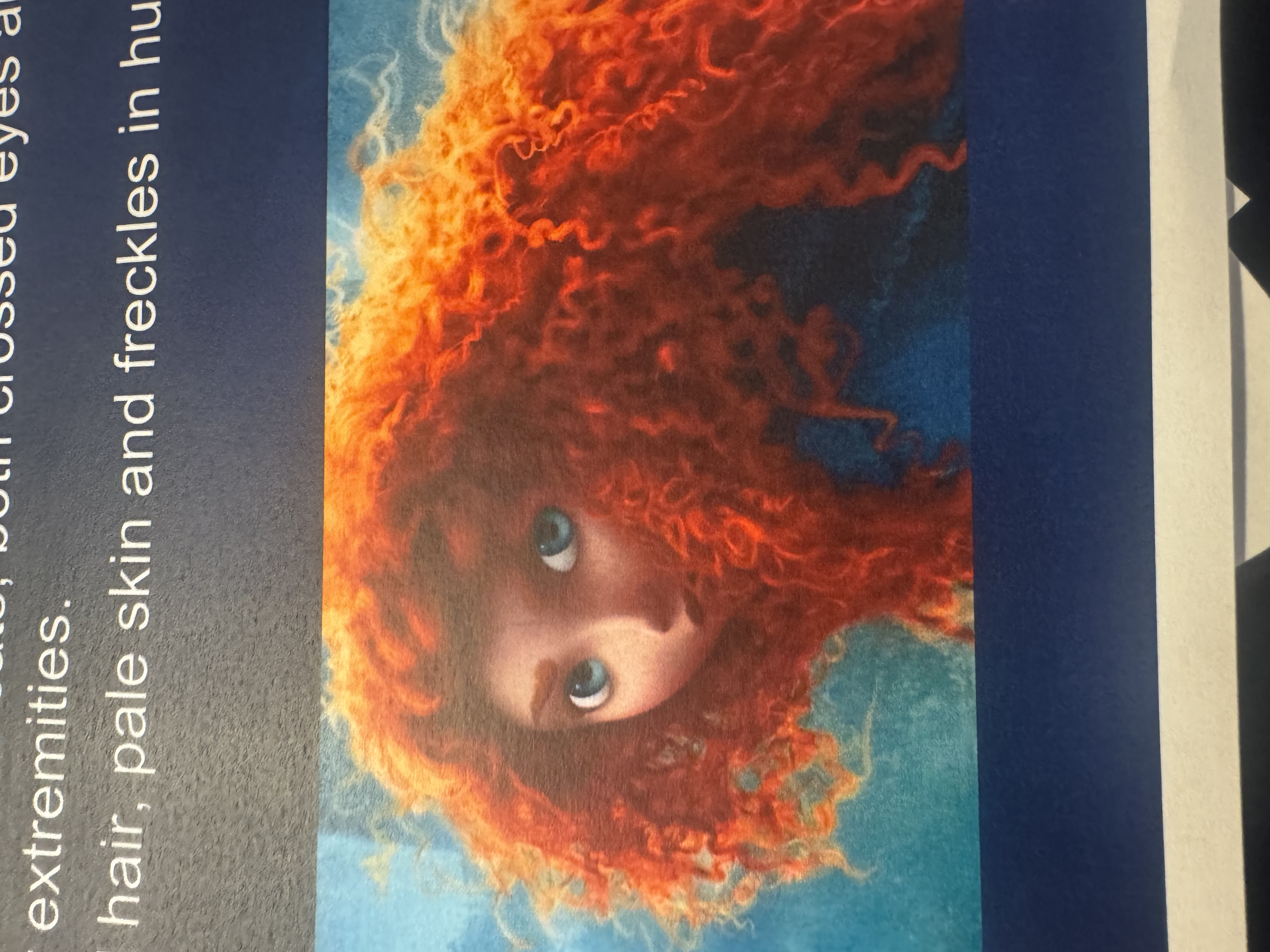
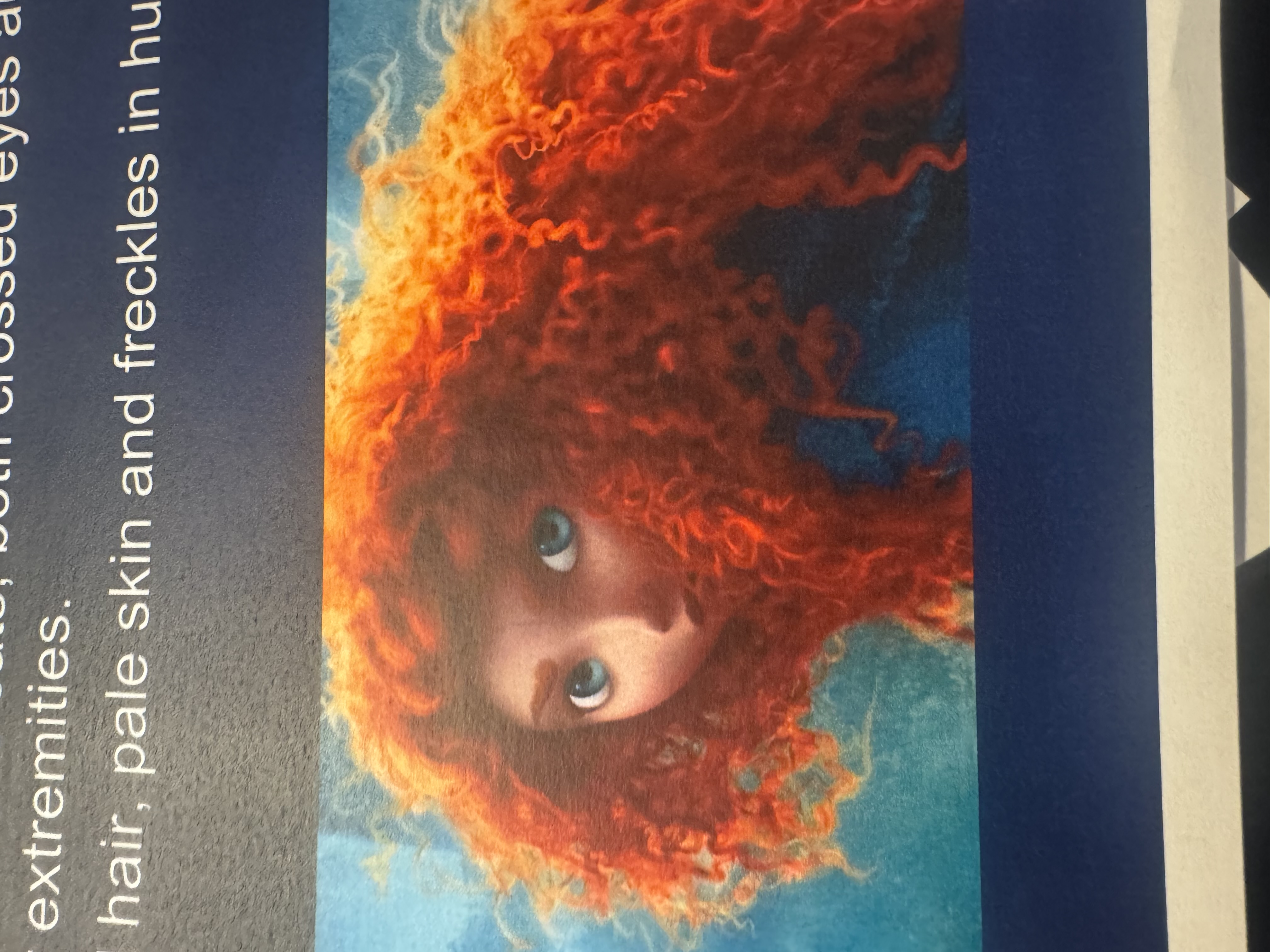
How do the images on the slide relate to pleiotropy?
They show examples of a single gene affecting multiple traits — red hair, pale skin, freckles in humans, and dark-tipped extremities & eye traits in Siamese cats.
What are polygenic traits?
Polygenic traits are controlled by two or more genes (usually by many different genes at different locations on different chromosomes).
Do polygenic traits show simple dominant and recessive qualities?
No. Polygenic traits will never show dominant and recessive qualities for the phenotypes
What kind of phenotypic pattern do polygenic traits show?
They show a complete bell curve with a midrange or mean height being most common.
What is an example of a polygenic trait given in the slide?
Height – 13 different genes (each with 2 different alleles) control height in humans.
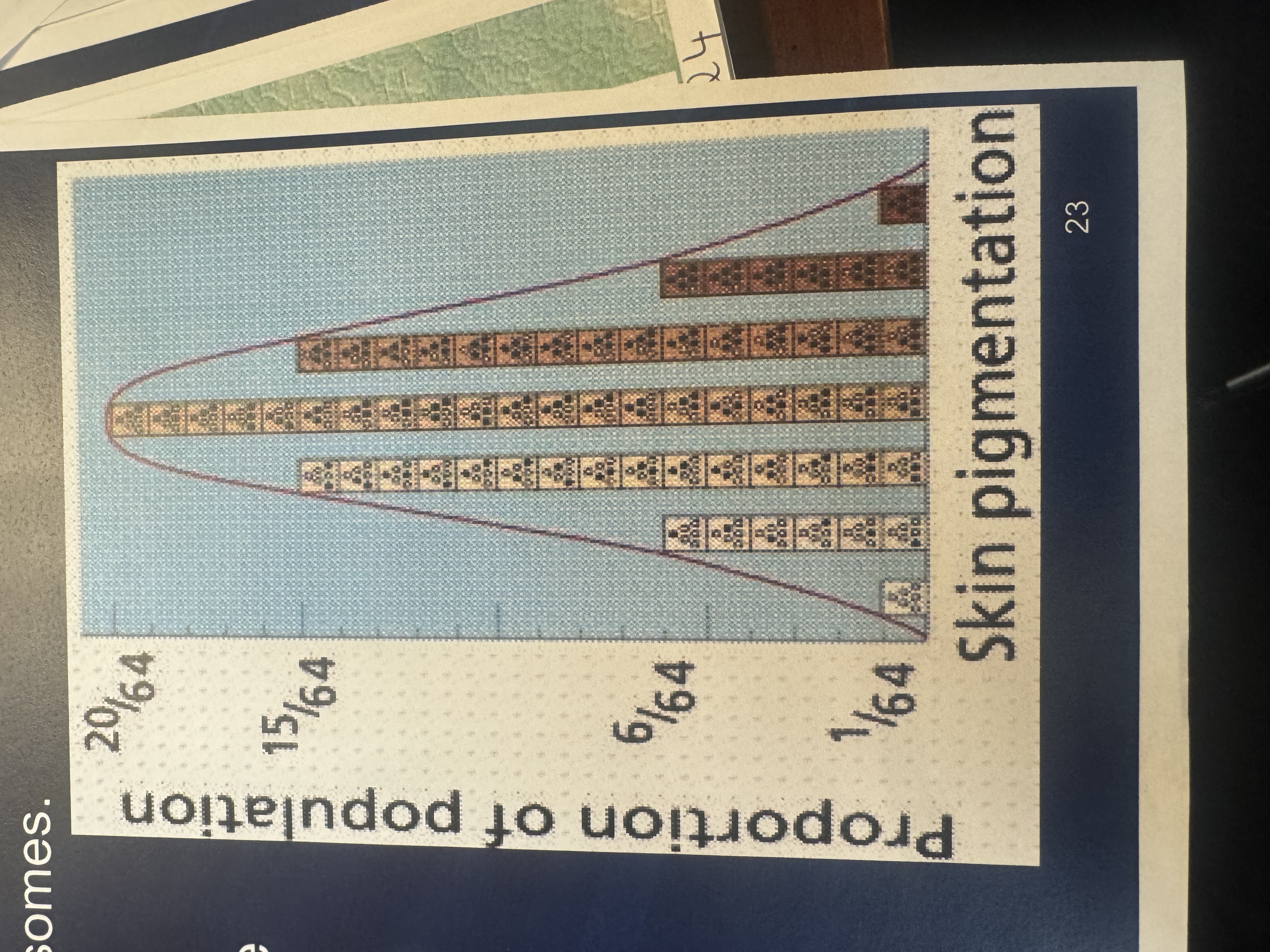
What does the bell curve image represent in this slide?
The distribution of polygenic traits in a population, such as skin pigmentation or height, where most individuals fall in the average range.
an organized profile of a person’s chromosomes when they are fully condensed and easy to see (usually in metaphase).
A karyotype
When are chromosomes fully condensed and easy to see?
When they are in metaphase
How are chromosomes arranged in a karyotype?
They are arranged and numbered by size, from largest to smallest.
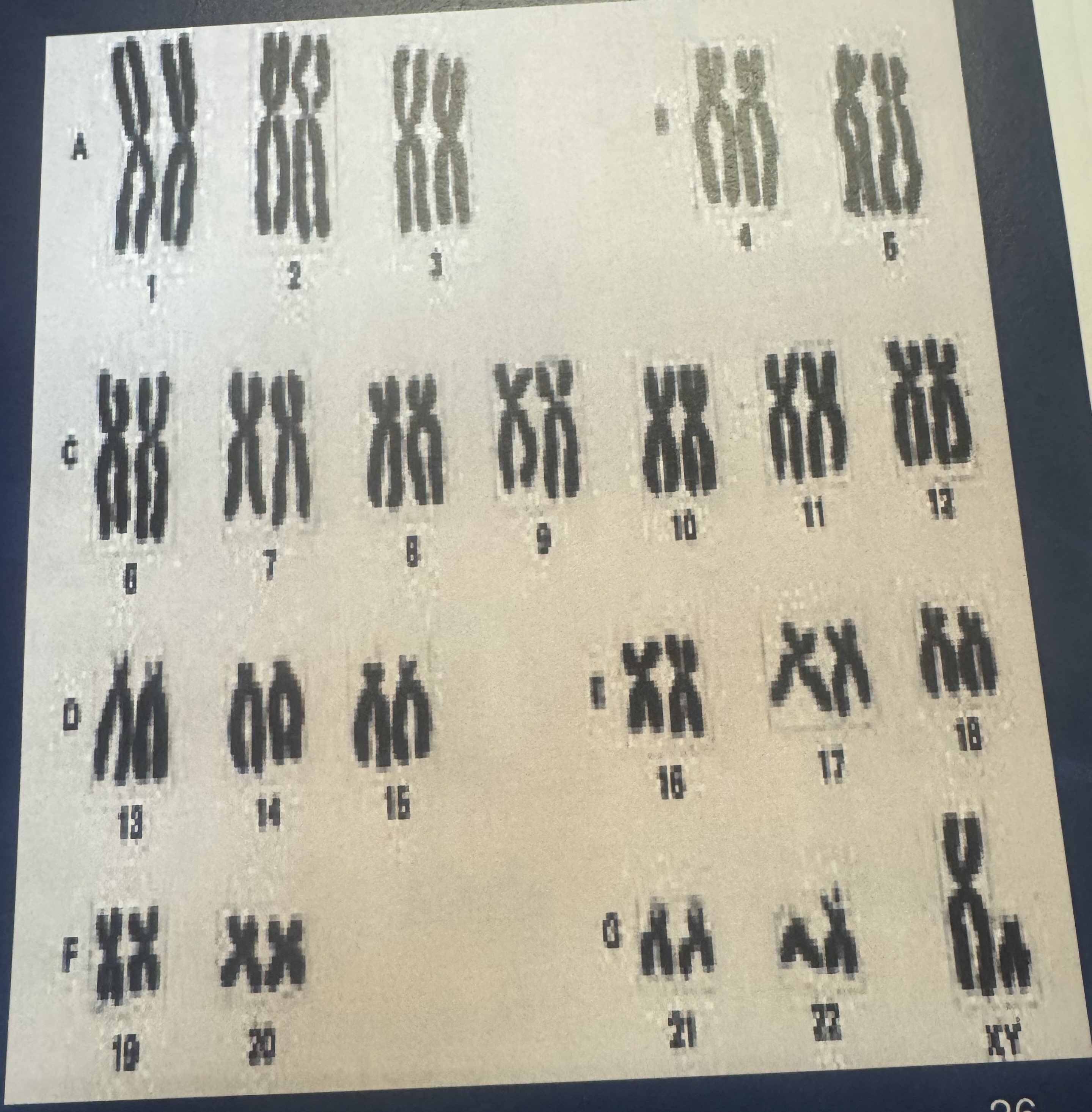
Why are chromosomes arranged this way in a karyotype?
This arrangement helps scientists quickly identify chromosomal alterations that may result in a genetic disorder.
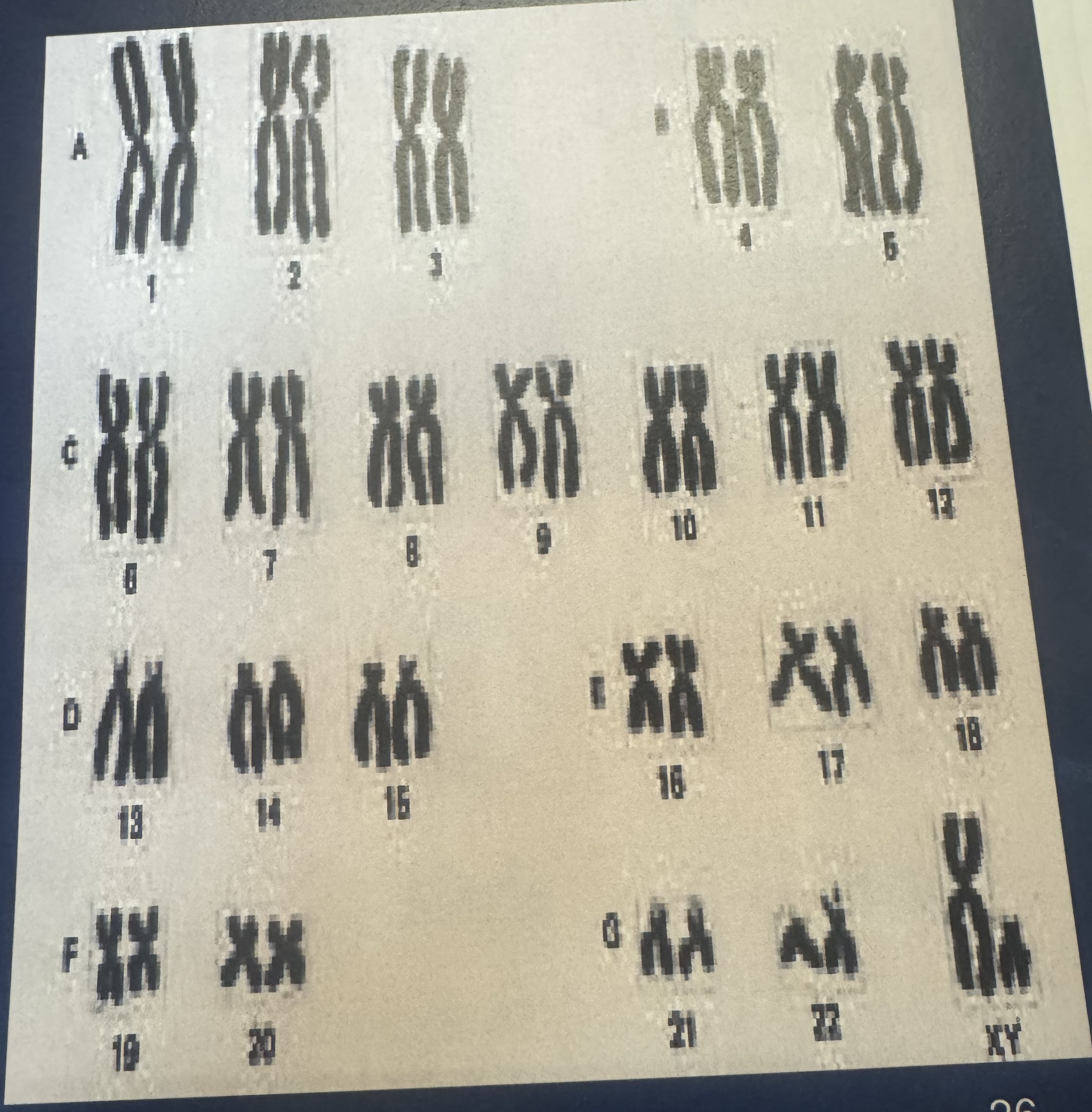
What does the image of the karyotype show?
A complete set of chromosomes organized by size and paired, allowing scientists to check for abnormalities.
Who is a carrier (heterozygote)?
A person who has one recessive allele for a trait and one dominant allele
Does a carrier show the trait?
A carrier of a trait controlled by a recessive allele does not have the trait; however, the carrier can pass the allele on to his or her offspring.
Who can be carriers of sex-linked traits?
With sex-linked traits only females can be carriers.
Why can only females be carriers of sex-linked (X-linked) traits?
Because females have two X chromosomes (XX), so they can carry one affected X and one normal X. Males (XY)
Why can only females be carriers for X-linked conditions?
Because only females are able to be carriers for X-linked conditions; males will always be affected by any X-linked condition
Why are males more commonly affected by X-linked recessive conditions?
Since males have no second X chromosome with a healthy copy of the gene. As such, X-linked recessive conditions affect males much more commonly than females.
What is the statistic for colorblindness in males and females?
1 in 10 males and 1 in 100 females are colorblind.
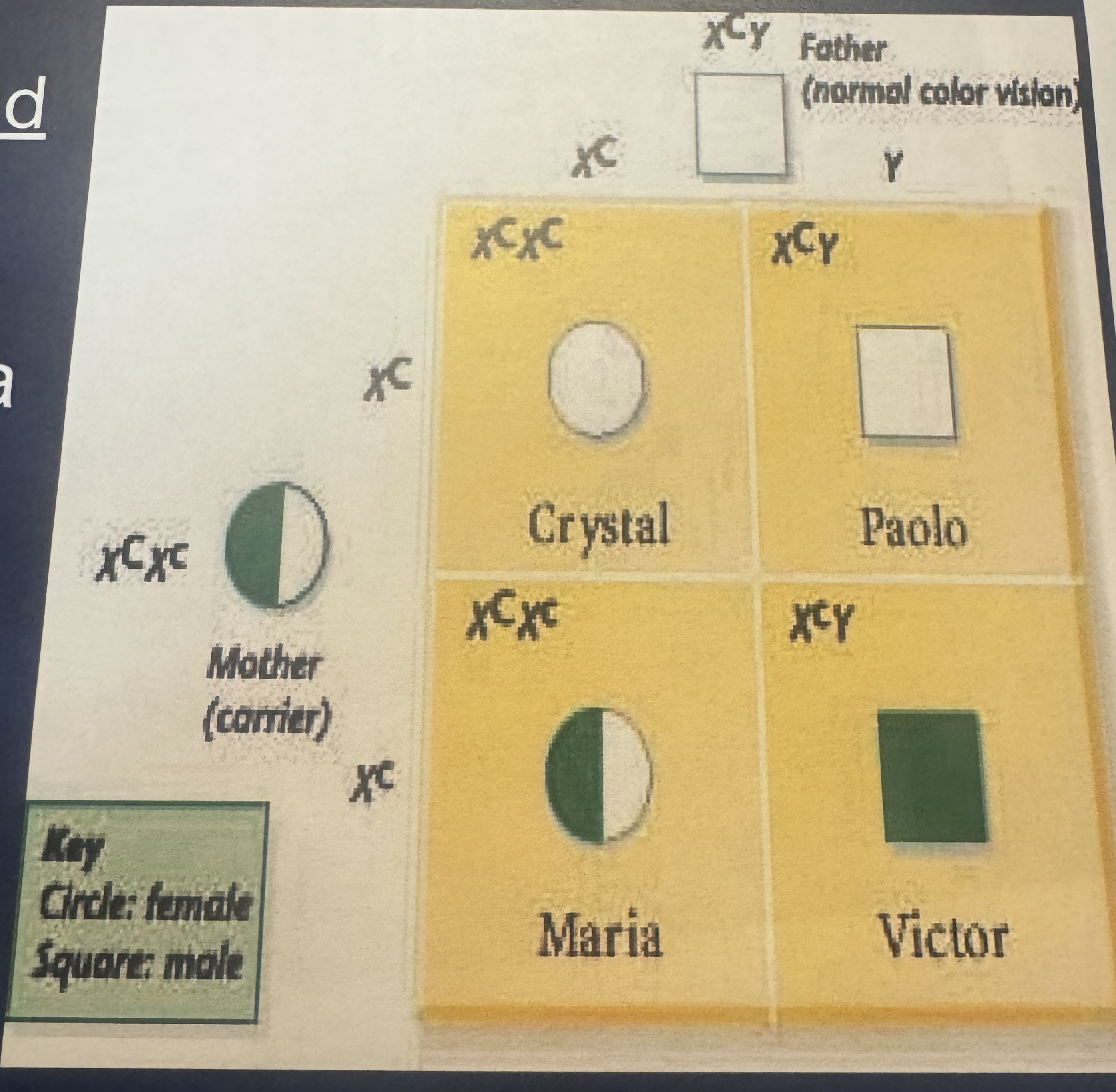
What does the Punnett square in the slide show?
It shows how a carrier mother (XᴰXᶜ) and a normal father (XᴰY) can pass colorblindness to their sons or daughters.
What are the 2 modes of inheritance (aside from recessive and dominant)?
Autosomal (#1–22) and Allosomal (or Sex-linked #23).
What are autosomal chromosomes?
Any chromosome that is not a sex chromosome. They look the same in both male and female.
How many autosomal chromosomes do humans have?
22 pairs (#1–22).
What are allosomal (sex-linked) chromosomes?
The pair of sex chromosomes (#23)
What do allosomal (sex-linked) chromosomes lead to?
They lead to sex-linked disease.
What are chromosomal disorders?
Genetic disorders caused by changes in the DNA of genes resulting in changes in the overall structure or number of chromosomes
How are some genetic disorders inherited?
They are inherited, meaning passed from parent to child in sperm and egg.
What causes most genetic disorders?
Most disorders are caused by mutations (abnormal change) in the DNA of genes
What changes can mutations cause in chromosomes?
They can cause changes in the overall structure or number of chromosomes
How are other mutations acquired?
They are acquired at some point in the person’s life due to exposure to chemicals, radiation,
Why can’t some chromosomal changes be passed from one generation to the next?
Because some changes occur in somatic cells (cells other than eggs and sperm), so they cannot be passed to the next generation.
What are the 3 patterns of inheritance?
• Sex-linked (recessive) involving X and Y
• Autosomal recessive
• Autosomal dominant
A pattern of inheritance that results from genes located on the sex chromosomes (X or Y).
a sex-linked trait
Pattern of inheritance that results from genes located on the X chromosome.
X-linked
Pattern of inheritance that results from genes located only on the Y chromosome.
Y-linked
Is BIG (5–6% of genome) with lots of genes (mostly encoding somatic function), markers, and disease-associated mutations
The X chromosome………
Back: Is small (though variable in length)… but it does have some genes
The Y chromosome…
Girl or Boy – What chromosomes do they have?
• If you are a girl, then they match (XX).
• If you are a boy, they do not match (XY).
What is the only chromosome pair that does not always match?
The sex chromosomes.
Why can only females be carriers for X-linked conditions?
Because only females are able to be carriers for X-linked conditions; males will always be affected by any X-linked condition.
Why are males more commonly affected by X-linked recessive conditions?
Since males have no second X chromosome with a healthy copy of the gene. As such, X-linked recessive conditions affect males much more commonly than females.
What is the statistic for colorblindness in males and females?
1 in 10 males and 1 in 100 females are colorblind.
What does the Punnett square in the slide show?
It shows how a carrier mother (XᴰXᶜ) and a normal father (XᴰY) can pass colorblindness to their sons or daughters.
Who has Y chromosomes?
Only males have Y chromosomes.
How are Y-linked genes inherited?
Genes on the Y chromosome are passed directly from father to son
Are Y-linked genes expressed in males?
Yes, all Y-linked genes are expressed
Having only one copy of a gene instead of the usual two (for genes on the Y chromosome).
hemizygous
How many Y-linked traits are known?
To date, only 36 Y-linked traits have been identified.
Give an Example of a Y-linked trait
Excessive hair on the ear pinna (external ear).
Who is more affected by X-linked recessive traits?
These traits affect males more than females
Why are males more affected by X-linked recessive traits?
Because males are hemizygous (only one X chromosome).
What does hemizygous mean?
A condition where only one copy of a gene or DNA sequence is present in diploid cells
How is a recessive gene on the X chromosome expressed in males?
It is expressed in both recessive and dominant conditions because males only have one X chromosome.
How do affected males pass X-linked traits?
They pass the mutant X-linked allele to all of their daughters (who receive their father’s X chromosome), but not to their sons (who receive the Y chromosome).
Why can a genetic trait or disorder appear to skip a generation?
Because the gene may be passed through a carrier who does not show the trait but can pass it to their children.
Why might a man with an X-linked mutation not pass the disorder to his son?
Because sons inherit their X chromosome from their mother and Y chromosome from their father.
How can a daughter inherit an X-linked mutation?
If her father has the mutation and her mother passes on a normal X chromosome
What happens if a carrier daughter (with one mutated X chromosome) has a son?
Her son has a 50% chance of inheriting the mutated X chromosome and having the disorder.
Why does it appear that the trait or disorder “skips” a generation?
Because it can pass from grandfather → carrier daughter (no symptoms) → grandson, who shows the trait.
What is the key reason an X-linked trait might skip a generation?
Females can carry one mutated X chromosome without showing symptoms and pass it to their children.
Mostly males exhibit this trait – why?
Because males are XY; the Y has nothing to fight off the X with a recessive mutation.